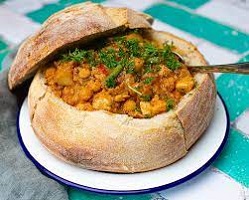Prekese for Nursing Mothers: Aidan Fruit & Flat Tummy
Prekese for Nursing Mothers ~ Aidan Fruit for Flat Tummy
Prekese, also known as Tetrapleura tetraplera, is a native of West Tropical Africa and a member of the pea family with a number of therapeutic uses.
The plant’s fruits have an extremely potent scent that has insect-repelling qualities. This healing herb is indigenous to Nigeria and other African nations.
Prekese can be used to treat a variety of illnesses, including inflammation, leprosy, rheumatoid arthritis, convulsions, etc.
Table of Contents
Prekese for Nursing Mothers Related Articles >>>
- Prekese and Male Fertility ~ Aridan Fruit for Fertility
- What Is Prekese Good For? Health Benefits of Prekese
- Health Benefits of Prekese (Tetrapleura Tetraptera)
- Side Effects of Prekese: Benefits of Drinking Boiled Prekese
- Prekese and Pregnancy: Is Prekese Good For Fertility?
Postpartum Care ~ Prekese for Nursing Mothers
The plant pod is added to soup as a flavoring and is best given to new moms to stop contractions.
It is claimed that the pods are rich in potassium, calcium, and iron. Some people believe that these three components are essential for postpartum mothers.
According to tradition, prekese soup restores lost blood and helps nursing women produce milk.
What Is Prekese? Description/Taste
Prekese is a dark purple-brown fruit that is 15–25 cm long and 5 cm broad. It has four longitudinal ridges that resemble wings.
Its flavor is mildly sweet and stringent, and it tends to lend a sweet, fragrant aroma to soups and other meals when they are cooked.
The plant also has phytochemicals, vitamins, minerals, anti-inflammatory effects, and antioxidants. It also has therapeutic properties in its bark, fruits, and leaves.
Other Local Names of Prekese ~ Prekese for Nursing Mothers
Prekese has its origin in West Africa. Because of this, the plant goes by numerous names across the tribes and nations that surround Africa.
For example, Nigerians in the Igbo language call it oshosho or osakirisa, whereas those in the Yoruba language call it Aidan and ubukirihu.
In addition, the other regional names are Imiminje, Apapa, Edeminang, Ighirehimi, and Ighimiaka.
Ghanaian prekese is known as prks in Twi. Aidan fruit is the name given to the shrub in English.
Seasons/Availability
Dried Prekese pods are available all year round.
Facts
Known as Tetrapleura tetraptera botanically, Prekese is a popular cooking spice and traditional medicine in West Africa.
The fruit is produced on a deciduous tree called the Aidan tree. The tree attains a height of 20 to 25 meters.
Prekese Nutritional Facts
Aridan is very nutrient-dense because it is loaded with minerals and phytochemicals that are vital for our bodies.
Additionally, it is abundant in flavonoids, tannins, steroids, and phenolic compounds, as well as iron, potassium, calcium, zinc, and phosphorus.
Prekese has a dietary energy content of between 234.42 and 379.48 g/cal, 7.44% to 17.50% in terms of crude protein, and 4.98% to 20.36% in terms of crude lipids.
Uses/Applications
The fruit is high in sugars and is used as a flavor in pastries and pastries, as well as in traditional West African soups including pepper soup and palm nut soup.
Prekese for Nursing Mothers
This long, hard fruit is either dried or grated, or put in soup and then taken out just before serving. Then the tea is given to new moms to stop contractions.
Prekese is frequently used as a medication for a variety of diseases in addition to being used as a spice.
The Adrian tree’s stem, root, leaves, bark, and pods can be used, whether they are soaked, pressed, crushed, extracted, or added to a variety of herbal mixtures.
Prekese has also been used to make skin-soothing soaps and balms.
The plant can also be used with palm kernel oil when dried and ground into a fine powder, it can be included with palm kernel oil or shea butter for dermatological care.
The fruit and flowers can be used as a natural insect repellent and have also found their way into products made locally like perfumes.
Ethnic/Cultural Details
In Africa, prekese is a well-known medicinal plant. To avoid post-partum contractions (Prekese for Nursing Mothers), it is prepared in soup and given to moms.
Additionally, it is used to increase blood flow, lower blood pressure, manage asthma, stop the formation of bacteria, prevent some forms of ulcers, and reduce hypertension.
Prekese has been used to flavor soft drinks in Ghana
Geography/History
Prekese has a long history of use as a medicine in Africa, and since 1948, research in lab and field experiments has confirmed the plant’s therapeutic benefits.
From Senegal through Sudan, Uganda, and Kenya, south to Angola and Tanzania, it extends throughout all of West Africa.
The Aidan tree can be found in savannah woodlands, secondary forests, and rainforests. It is also occasionally found on African plains.
List of 10 Health Benefits of Prekese Worth Knowing
Now let us take a look at the immense prekese benefits:
- Controls Diabetes:
Tetrapleura tetraptera is useful for treating Type 2 diabetes mellitus, according to a rat study. Prekese fruit extract is thought to reduce blood glucose levels during fasting and non-fasting hours.
- Encourages Loss of Weight
You can quickly lose weight by drinking prekese tea since the prekese beverage has the power to flush off excess body fat.
- Functions as an insect repellent:
The plant has a potent scent, which makes it effective at keeping mosquitoes away. The essential oils found in prekese are thought to be responsible for their effects.
- After-natal Care ~ Postpartum Care/ Prekese for Nursing Mothers:
The plant pod is added to soup as a flavoring and is best given to new moms to stop contractions.
It is claimed that the pods are rich in potassium, calcium, and iron. Some believe that these three elements are essential for postpartum mothers.
According to folklore, prekese soup restores lost blood and helps nursing women produce milk.
- Convulsion management
In traditional medicine, the stem, fruit, and leaves of the prekese are used to make herbal brews. Convulsion management may be aided by this.
According to studies, the plant’s aqueous extract has central nervous system effects and anticonvulsant properties.
- Wound Healing Properties
The plant’s moist extract contains compounds that can treat wounds.
The lower concentration (200 mg/ml) is more effective than the larger concentration (200 mg/ml), according to a study conducted at Uyo University.
Therefore, it is advised to utilize the plant’s lesser concentration while treating wounds
- Antibacterial Properties
The plant has microbial and antibacterial components. These characteristics make the plant’s extract useful for manufacturing soap.
The soap can be used to treat bacterial infections, inflammation, and skin conditions.
In addition, prekese can scent, harden, and give froth to the soap.
- Contraceptive Properties:
The prekese plant has saponin and ethanol extract in its stem and bark.
These characteristics supposedly act as contraceptives by releasing a hormone called luteinizing hormone.
- Treats Leprosy
A study suggests that the aridan plant is also utilized to treat leprosy.
As a result of the disease’s severe impact on the skin, mucous membranes, and nerves, lumps and skin blemishes develop.
Mutilation and deformities can also result from leprosy cases that are more severe
- Anti-inflammatory Properties
The plant extracts contain substances that are anti-inflammatory and have an effect on a number of human pathogens.
This may result in a reduction in rheumatoid arthritis, arthritic pain, and bodily inflammation.
Other health benefits of prekese include:
- Culinary Purposes
- Treats Cardiovascular System
- Contain Molluscicidal Properties
- Dermatological Care
- Supports Immune System
- Has Antibacterial Properties
How to Prepare Aridan Tea or Prekese for Nursing Mothers Tea
Prekese pods can be cut up into little pieces and crushed to add taste to meals. The plant can also be put to meals while it is cooking and removed before serving.
This spice must be added to the cuisine in order for it to properly infuse and impart an aromatic scent.
The stem, root, leaves, bark, and pods of the aridan plant can be blended, squeezed, soaked, crushed, extracted, and turned into mixtures for use in herbal remedies.
Recipes That Include Prekese ~ what are some ways to cook with prekese?
Your soups and stews will have a funky flavor thanks to this addition.
It imparts a mildly sweet yet assertive flavor to meals and beverages when used as a cooking spice, giving them a fragrant, syrupy scent.
Prekese Recipe Ideas for Nursing Mothers
- Prekese brew
- The tastiest goat meat stew infused with prekese
- Preparing one of ghana’s favorite soups, ebunu ebunu
- Ghanaian goat meat light soup/pepper soup
The Bottom Line about Prekese for Nursing Mothers
Many rural residents still receive numerous health benefits from T. tetraptera through their food and drinks.
Some of them now drink its juice as their standard morning tea in their various residences.
Many people are still unaware of its preparation, concentrations, and recommended dosages.
This request for research is meant to expand our comprehension of this limited information.
Entrepreneurs may hopefully add value, by advancing the prekese drink and expanding into foreign markets.
FAQs about Prekese for Nursing Mothers
Does Prekese benefit nursing mothers? Prekese for Nursing Mothers
Yes. Breastfeeding mothers who take prekese experience increased milk supply
What does Prekese cure?
Regular use has been said to lower blood sugar levels, lower blood pressure, lower cholesterol, provide vital postpartum nutrients that stop blood loss and create milk, lower fevers, and have wound-healing properties.
Is Prekese tea good for pregnant women? Prekese for Nursing Mothers
Many Ghanaian women often utilize this fruit for prekese and pregnancy.
In order to keep the postpartum women from experiencing abdominal contractions, it is cooked into a soup and given to them.
The pods are a good source of potassium, calcium, and iron.
What effects do lemon and prekese have on the body?
Lemon and ginger will cleanse the liver, detoxify the body, and improve digestion
Blood circulation is enhanced by this herbal mixture, which is crucial for heart health.
To heal your body, enjoy Aidan fruit with ginger and lemon infusion!
What herbs should you avoid while breastfeeding?
Comfrey, coltsfoot, borage, aloe, black cohosh, feverfew, ginseng, licorice root, and kavakava are herbal remedies to stay away from while nursing.
What is the name of Prekese in English?
Fruit, Aidan English:
The fruit is known by the English name Aidan, Aridan in Yoruba, Prekese in Twi in Ghana, and Oshosho or Osakirisa in Ibo.
The fruits of this shrub are valued for their culinary and medicinal qualities in West Africa
Does Prekese boost the immune system?
Vitamins, iron, calcium, potassium, zinc, and other minerals and nutrients are abundant in prekese. The immune system is supported and strengthened by nutrition.
Can you drink Prekese on empty stomach?
The ginger stem should then be removed by straining the mixture through a fine strainer. After that, mix well while adding honey or sugar to taste.
Finally, transfer the juice to a bowl, bottle, or refrigerator to chill. Drinking is permitted both at night and first thing in the morning while you aren’t yet eating
What is the Igbo name for Prekese?
Western Africa is the natural home of the Fabaceae flowering plant species Tetrapleura tetraptera.
In Ghana’s Twi language, the plant is referred to as Prekese (or, more precisely, Prks, also known as Soup Perfume).
In the Igbo language of Nigeria, it is also known as Uhio (Uhiokrihio).
What are the Health Benefits of Aidan fruit?
Key vitamins and minerals found in adan fruits include zinc, iron, potassium, calcium, and magnesium.
These vital vitamins and minerals support the body’s immune system at its best.
They ensure that our bones and muscles are functioning to their full potential, renew blood cells, and safeguard the body against viruses.
Which nation cultivates prekese?
Western Africa is the original home of the pea family flowering plant species tetrapleura tetraptera.
Prekese (or, more precisely, Prks) is the name of the plant in Ghanaian Twi.
What is Yoruba Aidan? What is Aidan Yoruba?
Tetrapleura tetraptera, the scientific name for Aidan Fruits, is one of nature’s greatest wonders.
In Yoruba, it is known as Aridan, in Igbo as Osakrisa, and in Ghana as Prekese.
Is Tetrapleura tetraptera good for conception?
Tetrapleura tetraptera significantly increases sperm count, motility, normal morphology, daily sperm production, the efficiency of sperm production, sperm (average path velocity, straight-line velocity, and curvilinear velocity), TET, LH, FHS, SOD, GPx, CAT, number of pregnant women, number of fetuses, seminiferous, and sperm (average path velocity, straight-line velocity, and curvilinear
Does prekese have acid in it?
Prekese includes a total of 17 amino acids, according to the findings.
How are prekese prepared to lose weight?
Prekese tea for weight reduction preparation instructions allow it to boil for around 10 minutes; the longer it soaks, the more juice and flavor it releases from its pods.
Remove the mixture from the heat and pass it through a fine sieve to get rid of the ginger stem.
After that, taste and add honey if you’d like; otherwise, drink without it.
What is the purpose of Tetrapleura tetraptera?
Fish sickness, unique tropical fragrances, and spices are all used for it.
One of Nigeria’s molluscicidal medicinal plants, it is also effective in treating convulsions, leprosy, inflammation, and/or rheumatoid arthritis problems.
What is the meaning of Tetrapleura tetraptera?
Tetrapleura tetraptera is a local fruit tree in Tropical Africa.
Scientific results indicate its medicinal and nutritional properties, vital for rural livelihood sustainability.
How are Aidan fruits prepared?
All you have to do is chop or crush the pods and add them to your food.
However, you must cut a few pods into pieces and boil them in water for about 30 minutes in order to prepare the fruits for medicine.
For a month, sip a half cup in the morning and evening.
How is prekese syrup made?
Prekese Syrup (CSIR Prekese) is a decoction of the native prekese fruit (botanical name, Tetrapleura tetraptera) for the treatment of ailments that are based on scientific study
What does the word “Uyayak” mean?
Another name for Uyayak is Aidan Pods. This African spice is employed in both culinary and medicine.
Uyayak is used in a variety of meals, including Abak Atama, Afia Efere, Peppersoup, Iwuk Efere, and Efere Ibaba.
A little bit of the fleshy side of the pod, cut into little pieces, adds a lot to the dish’s delicious scent.
Aidan fruit and pregnancy ~ how do you use Prekese for fertility?
Prekese, also known as Aidan fruit, comes in four sticks. Boil them in just two liters of water.
After adding 20 pepper sticks and 2 pinches of potash, cook for 20 minutes. Make sure you take it both at night and in the morning
Side effects of Aidan fruit
Obstetrics and Aidan Fruit. Pregnancy is not safe when eating Aidan fruit.
Nausea and vomiting are two more adverse effects of aridan fruits.
What is Aidan fruit used for?
The fruits’ stinging aroma also serves as an insect deterrent.
Aidan tree is used in traditional medicine to treat sterility, weight loss, back pain, ease labor pains, and to cleanse the digestive system.
It is also used as a laxative during childbirth to hasten delivery.
Aidan fruit and cloves
The Prekese (Aidan Fruit) Tea is combined with organic cloves, alligator pepper, and spices for an energizing experience.
It also functions as a sweet flavoring for soups and sauces.




Pingback: Side Effects of Aidan Fruit - 9jafoods
Pingback: Benefits of Prekese Sexually ~ the Facts - 9jafoods